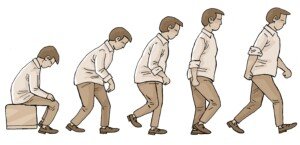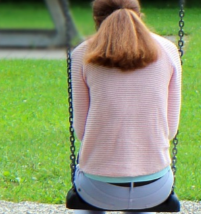How Many Days Can an IBS Attack Last?

An IBS flare or attack is no picnic and can last for many days.
“Some attacks can last for a few hours, some days,” says Michael Blume, MD, a gastroenterologist at MedStar Good Samaritan Hospital, Baltimore.
Dr. Blume continues, “IBS attacks can be of variable duration and are different from person to person.”
Irritable bowel syndrome should be diagnosed only when all other possible causes have been ruled out.
“IBS is not an all or nothing disorder,” says Dr. Blume. “Some people have very mild symptoms, some very disabling symptoms. Many people with mild or sporadic symptoms do not even seek medical attention.”
They may simply attribute their symptoms to something they ate or stress.
Symptom Range Varies with IBS: Sporadically to Days on End
“The same goes for duration of symptoms,” says Dr. Blume. “There are some people who have very sporadic symptoms that last for a short period of time. Other people have constant symptoms, and there is everything in between.
“A person with symptoms occurring infrequently and for short durations may choose to treat their symptoms with episodic therapy, if they choose to treat the symptoms at all.
“Someone with frequent or long-lasting symptoms may benefit from taking medications on a regular basis.
“We tend to use symptom duration and symptom frequency to help make decisions as to how to best treat these symptoms.
“It is also important to remember that IBS is not a medically dangerous condition, although it can be at times quite painful, and often socially incapacitating.
“A decision to treat these symptoms at all should depend on how much these symptoms are bothering that person, and how much it impacts quality of life.”
So as far as duration (days, weeks, months), irritable bowel syndrome is a no-size-fits-all condition.
 In practice for 25+ years, Dr. Blume treats over 65 conditions including abdominal pain, appetite loss, blood in stool, celiac disease, colon cancer, esophageal and liver disease, gas and IBS.
In practice for 25+ years, Dr. Blume treats over 65 conditions including abdominal pain, appetite loss, blood in stool, celiac disease, colon cancer, esophageal and liver disease, gas and IBS.
 Lorra Garrick has been covering medical, fitness and cybersecurity topics for many years, having written thousands of articles for print magazines and websites, including as a ghostwriter. She’s also a former ACE-certified personal trainer.
Lorra Garrick has been covering medical, fitness and cybersecurity topics for many years, having written thousands of articles for print magazines and websites, including as a ghostwriter. She’s also a former ACE-certified personal trainer.
.
Top image: Shutterstock/CHAjAMP
How to Reverse the Harm of 3 Hours’ Non-Stop Sitting
There’s a way to undo some of the harm of prolonged sitting for three hours.
If you’re sitting at your computer for three hours, but get up three times during that session and walk for five minutes, this will make a big difference when compared to not leaving the chair once during that three hours.
A study from Indiana University says that the three, five minute walks, even if done slowly, can reverse the harm that the prolonged sitting can do to the arteries in the legs.
Excessive sitting is linked to a myriad of insults including higher cholesterol, fat gain, blood clots, back pain, heart disease and increased mortality over the short term.
The earliest studies of prolonged sitting grabbed my attention and I purchased a treadmill desk, but if you don’t have such a device, at least get up three times in three hours and walk for five minutes.
The Problems in the Legs
The IU study says that prolonged sitting causes muscles to become slack, reducing their ability to efficiently pump blood to the heart.
The result is blood pooling in the legs, which can adversely affect arteries there.
Population-based evidence links prolonged sitting to a number of chronic conditions and also links breaking up the sitting time with some relief of harmful effects.
However, “there is very little experimental evidence” of this, says lead IU study author Saurabh Thosar in the paper.
The study shows that prolonged sitting leads to impairment of endothelial function in the leg arteries.
What only 60 Minutes of Continuous Sitting Can Do to the Legs, even Though You Won’t Feel It
Just one hour of continuous sitting will impair the function of the main artery (femoral) in the legs, say the IU researchers…by as much as 50 percent.

But the study subjects who got up the three times to walk five minutes experienced no drop in the arterial function.
When did the study subjects take the walking break? At the 30 minute mark, 1.5 hour mark and 2.5 hour mark. They walked 2 mph.
Sitting Disease: The “New Smoking”
Sitting for prolonged periods day in and day out is now considered as hazardous to one’s health as smoking.
And as you’ve just read, even three hours is harmful.
Prolonged habitual sitting is strongly linked to an assortment of health ailments.
Tips on Breaking up Sitting Time
• Do not finish all your housework before a planned sitting marathon.
Instead, let it accumulate.
This will give you an excuse to get up every hour or less (less is better) to be on your feet as you do household tasks.
• Some tasks that you can save up for a sitting marathon include: watering the plants, emptying or loading a dishwasher, taking out the garbage, replacing a furnace filter, folding laundry, vacuuming, dusting, going through the snail mail, ironing and picking up toys, hanging a picture and food preparation.
• You can also pace about to some music or perform some standing yoga poses.

Freepik.com
 Lorra Garrick is a former personal trainer certified through the American Council on Exercise. At Bally Total Fitness she trained women and men of all ages for fat loss, muscle building, fitness and improved health.
Lorra Garrick is a former personal trainer certified through the American Council on Exercise. At Bally Total Fitness she trained women and men of all ages for fat loss, muscle building, fitness and improved health.
.
Source: sciencedaily.com/releases/2014/09/140908083748.htm
Left Lower Sharp Stomach Pain in Elderly, Hurts to Touch

Does an elderly family member have a lower left, sharp pain in the abdomen that hurts upon touching?
If so, take this person to the emergency room.
This is what happened to my father.
The pain greatly intensified if he rose from a seat and began moving
What made him decide to visit the ER was a sensation of fecal impaction, even though he’d been having bowel movements. The diagnosis was diverticulitis.
For the two weeks preceding the ER diagnosis, my father had noticed a suppressed appetite. Diverticulitis can cause this.
About two weeks after he began losing his appetite, he awoke from the middle of a nap with chills, and didn’t think anything of this, other than why didn’t my mother notice this and put a blanket on him (he didn’t appear cold while he slept on his side).
However, unable to truly nap, he took to sitting before a heater for quite a while. This is very uncharacteristic of my father.
That’s when he told me his stomach was upset, and that lately he’d been feeling some bloating. A little while later that day, he felt feverish. His temperature was just over 100.
A fever is another classic symptom of diverticulitis. Oddly, his temperature returned to normal after several hours. We thought it was a transient “bug.”
A week later, my mother called me, asking if I could drive him to the ER. He was having sharp pains in the lower abdomen, but also pain (though not sharp) in the upper left side and lower middle.
He was convinced he had fecal impaction (severe constipation), and had been experiencing this sensation for a few weeks, trying to solve it with laxatives, but they weren’t working.
A blood draw revealed an elevated white blood cell count, which indicates infection.
The doctor kept pressing (palpating) his lower left abdominal area, and he’d jerk and wince from the pain. Diverticulitis was suggested as a possible cause, but a diagnosis wasn’t made at that point. A CAT scan was ordered.
“You have diverticulitis,” the doctor said some time later. The treatment was antibiotics and a temporary change in diet.
Though young people can get diverticulitis, one of the risk factors is increased age.
Lower left belly pain in an elderly person, especially if it really hurts to press on the area, should never be tolerated, even if you think it’s probably diverticulitis.
This condition can lead to a rupture, which requires emergency surgery.
 Lorra Garrick has been covering medical, fitness and cybersecurity topics for many years, having written thousands of articles for print magazines and websites, including as a ghostwriter. She’s also a former ACE-certified personal trainer.
Lorra Garrick has been covering medical, fitness and cybersecurity topics for many years, having written thousands of articles for print magazines and websites, including as a ghostwriter. She’s also a former ACE-certified personal trainer.
.
Top image: Shutterstock/ Olena Yakobchuk
What Should I Do If My Child is Afraid of Santa Claus?

Some parents cringe when their preschooler or toddler shows fear of sitting in Santa Claus’s lap.
Instead, parents should feel joy.
If a toddler or preschooler has no qualms about Santa Claus’s lap, parents should wonder just how easy it would be for a predator to lure this child into a car or woods when he or she is older.
A child with a built-in radar that warns him to stay away from strangers, is far less likely to be lured by a pedophile than is a preschool child who happily jumps into Santa Claus’s lap.
A smart child hesitates before climbing into the lap of Santa Claus, who means nothing more to that child (until he’s old enough to grasp the concept) than a big stranger with a white beard.
I’m not suggesting that kids who jump eagerly into Santa Claus’s lap will never learn to recognize “stranger danger,” but parents should feel a sense of relief, not embarrassment, if their child is afraid of Santa Claus.
Parents have been known to get very dramatic over this.
Parents have even spanked kids because the kids refused to sit in Santa Claus’s lap.
Kids have been called cruel names by parents because they were scared to sit in Santa Claus’s lap.
Children have been yanked away like stray dogs by disgusted parents and told they’d be getting no presents, all because the child had a well-tuned “stranger danger” radar. This radar may one day save your child’s life!
Pedophiles rely on a child’s WILLINGNESS, not reluctance, to be lured away!
Santa Claus’s lap should be a happy experience for the preschooler or toddler, not a terrifying one.
So if your child has “embarrassed” you before by showing fear of Santa Claus, realize that the fear is instinct kicking in.

Humans are hardwired by nature to be afraid of that which looks very different and unfamiliar. It’s not smart for parents to diffuse this innate guard in a child.
It’s what will help keep a child from wandering off with that “nice” man at the park (who’s already molested 28 kids) who’s offering your child candy or asking your child to help look for his lost puppy.
Often, pedophiles lure kids because they don’t want to create a scene. How else can they get kids to go off with them?
They entice kids. But not all kids fall for this.
Parents can bet that the kids who kick and scream upon being placed into Santa Claus’s lap, are more likely to refuse to help that “nice” man at the park search for his lost puppy — they will sense that something isn’t right about the man — but this wonderful radar can be destroyed by parents who make these panic-stricken kids remain in Santa Claus’s lap for a photo.
That “nice” man who can’t find his puppy is looking for a more social, “obedient” child!
Don’t you yourself have a natural instinct to stay away from creepy looking people?
If you’re a woman, would you go near a weird-looking man in the parking garage who’s calling you over to his car to help him lift something out of the backseat? Many men wouldn’t even take this chance.
But this is the same warning light that goes on in young kids who battle against sitting in Santa Claus’s lap.
Even though the parents approve of the idea, these kids still won’t buy into it, any more than you yourself would approach that creepy-looking man in the parking garage if your own parents urged you to help him out.
Parents expect young kids to be fearless towards strange-looking men in red suits with funny white beards, yet these parents exhibit fear of other people in many circumstances.
If you’ve ever scolded your child for being afraid to sit in Santa Claus’s lap, ask yourself:
Ever been afraid to speak up to your boss at work?
Ever been too fearful to report sexual harassment (or just deck the guy in the chops) at work?
Ever been scared to have an MRI, despite the doctor reassuring you?
Ever been too frightened to walk on the same side of the street as the bearded man in rags walking towards you?
Afraid of the dentist by any chance?
Why is fear in kids so often dismissed, yet their parents expect their OWN fears to be taken seriously — so seriously, in fact, that they’ll even sue over the fear?
Next time you feel like making your crying child sit in Santa Claus’s lap, imagine how you yourself would feel upon noticing that a strange-looking, bearded man is following you on his bike as you jog in the park.
Would you want to sit in his lap?
Even if your parents insisted ??
Would you want to sit in ANY stranger’s lap? Sitting in anyone’s lap is a very intimate-type thing.
Imagine your discomfort level upon being forced to sit in a complete stranger’s lap, especially a stranger who’s much bigger and looks really strange.
Well, this is how a frightened child feels about Santa Claus’s lap, but magnified.
Though all of this Santa-Claus-Fear info seems like plain ‘ol common sense,
Here is what Robin Altman, MD, child psychiatrist, mother of two and author of “Shrink Rap – An Irreverent Take on Child Psychiatry,” says about forcing kids to sit in Santa Claus’s lap:
“It is important not to chastise children for being fearful about sitting in Santa’s lap.
“It is a natural reaction, and can help them stay away from adults who mean them harm.
“Parents do not want to have a child who has no fear of strangers and can be coerced into dangerous situations.
“Yelling at kids about this, can override a very helpful innate response, and put kids at risk in the future.”
 In practice for 20+ years, Dr. Altman specializes in expert witness evaluations and testimony in child, adolescent and adult psychiatry. robinaltmanmd.com
In practice for 20+ years, Dr. Altman specializes in expert witness evaluations and testimony in child, adolescent and adult psychiatry. robinaltmanmd.com
 Lorra Garrick has been covering medical, fitness and cybersecurity topics for many years, having written thousands of articles for print magazines and websites, including as a ghostwriter. She’s also a former ACE-certified personal trainer.
Lorra Garrick has been covering medical, fitness and cybersecurity topics for many years, having written thousands of articles for print magazines and websites, including as a ghostwriter. She’s also a former ACE-certified personal trainer.
.
Top image: Shutterstock/Jim David
Crying Child in Santa Claus’s Lap: Disturbed Parents Think this Is Funny

Have you ever forced your crying child to sit in Santa Claus’s lap because your child was embarrassing you in front of other parents?
Or maybe you were hell-bent on getting that perfect Christmas photo of your child in Santa Claus’s lap to send out with the Christmas newsletter?
What is it about Santa Claus and Christmas that makes so many parents lose their senses?
Let me first say that I myself never had a problem sitting in Santa’s lap. I’d list all the presents I wanted for Christmas, but subconsciously knew that this was not where the presents came from.
My mother would have never made me sit in Santa’s lap. A few times she asked if I wanted to see him.
If I said no, then no big deal, we moved on to the shoe store or whatever. If I said yes, then she took me to see him.
No big deal either way. It was my decision to sit in a stranger’s lap.
I also remember asking to see Santa Claus one Christmas. My mother had more important things to worry about during the holiday season than whether or not her kids wanted to sit in a stranger’s lap.
My parents perhaps didn’t want to encourage greediness (kids sitting in Santa Claus’s lap asking for the whole world).
My parents also weren’t the type to get that Christmas photo at all costs and then show it off to relatives.
So when I say I have only sensible memories of Santa Claus and his lap, you can believe me.
However, I have seen, in newspapers during the holiday season, more than enough disturbing photos of terrified, crying kids writhing in Santa Claus’s lap. Editors think these photos are cute Christmas lore.

So do parents, giving the newspaper permission to print the screaming child’s full name. Well, this is insane.
You need not have a PhD in child psychology to figure out what’s really going on here.
Parents never force frightened kids to sit in Santa Claus’s lap for the benefit of the child. It’s for the benefit of the parents!
Now, before I go on, I DO realize that a small percentage of parents will force a crying child into Santa’s lap, believing this will “bring out” their shy child, or encourage more social interaction in general.
And of course, where in Heaven’s name do these parents get such a ridiculous idea?
The rest of the parents, however, make their scared, flailing child sit in an odd-looking stranger’s lap for the very same reason — ready for this? — that teenagers take up smoking.
WHAT ???
You read that right. It’s called PEER PRESSURE. Some parents just can’t stand looking like the oddball in the group.
The group is their peers: other parents, whose kids eagerly stand in the Santa Claus line.
But little Emily (or Michael) starts acting up and says she doesn’t want to sit in the scary-looking man’s lap.
Oh, the sensible parent would say, “You don’t? Well, okay then. Let’s get one of those big hot pretzels. But if you change your mind, let me know.”
But there’s something about the commercialism of Christmas that makes sensible thinking obsolete.
No parent in her (or his) right mind will have a weird child — one who’s afraid of Santa Claus!
And what parents wish to be seen with a crying child afraid to sit in St. Nick’s lap?
And for all the other parents to witness this? How humiliating! So this parent, then, becomes consumed with forcing her child to be “normal” like all the other kids waiting in line.
Being different from the crowd is unthinkable! Even though you don’t know any of their first names !
This is the exact kind of thinking that often makes a teenager start smoking: because everyone else is doing it and he or she doesn’t want to be viewed as the chicken or oddball.
And so it is with parents who make terrified kids sit in Santa Claus’s lap.
They cannot bear the idea of having a child who acts different from other kids, who “embarrasses” them, and makes them look like incompetent parents.
Of course, incompetency shines brightly when parents get flustered, berate their crying preschool kids and force them into a stranger’s lap, and then wonder why, five years later, their child was lured by a pedophile into the woods after instructing their child never to talk to strangers…
Based on pure, sheer common sense, anyone has to clearly see that peer pressure is the overwhelming reason parents force even screaming kids to sit — sometimes after wrestling with them — in Santa Claus’s lap.
The drive to fit into the crowd and be like everyone else is just too overpowering.
Then again, maybe the lust for that Christmas photo is the insatiable drive.
If ever someone showed me a photo of their shrieking child sitting in Santa’s lap — look out; they will be in for a real dandy lecture.
 Lorra Garrick has been covering medical, fitness and cybersecurity topics for many years, having written thousands of articles for print magazines and websites, including as a ghostwriter. She’s also a former ACE-certified personal trainer.
Lorra Garrick has been covering medical, fitness and cybersecurity topics for many years, having written thousands of articles for print magazines and websites, including as a ghostwriter. She’s also a former ACE-certified personal trainer.
.
Top image: Shutterstock/Brastock
Never Make Screaming Child Sit in Santa Claus’s Lap

Making crying or screaming children sit in Santa Claus’s lap is an act of selfishness.
These parents have no clue how detrimental it is to force frightened, crying kids into the lap of Santa Claus … or, to put it another way, the lap of a huge stranger.
Some parents will actually get a kick or thrill out of watching their toddlers writhe and cry while sitting — against their will — in a stranger’s lap during the Christmas season.
To a toddler or preschooler, a stranger is a stranger is a stranger, whether it’s some dude on the street, or a big man dressed in a red and white suit whom you know as Santa Claus.
It’s sickening how some parents will even take photos of their screaming, bawling child in Santa’s lap.
Obviously, these parents are thinking only of themselves.
They think it’s cute or charming to get a snapshot of their screaming child in Santa Claus’s lap.
Other parents who pull this cruel stunt do so because they feel embarrassed that their child dares to resist sitting in Santa Claus’s lap, especially when throngs of children are eagerly waiting in line to do this.
The parent thinks her child (or his child), is some kind of oddball, going against the grain. Little kids, after all, are supposed to love sitting in Santa Claus’s lap.
Nobody wants a kid who’s not normal, right? So never mind the kid’s fear, just shove him/her into the big guy’s lap. Brilliant! What a way to go!
Before you think my rant reflects any fears I had of Santa Claus when I was a young child, you’re mistaken, because my mother never got caught up in such commercialism; she was very practical, impatient and had no interest standing in long lines to see her daughter sit in a stranger’s lap.
She did not like this idea at all and thus, took me to see Santa Claus only if I insisted–which was maybe only a few times.
As a result, I didn’t know what I was missing as far as the Santa Claus lore, but before you feel sorry for me, realize that children miss only what they’ve been taught exists.
My Christian parents put the emphasis on Christ’s birthday, not St. Nick.
(I didn’t believe in the Tooth Fairy, either, but heck, candy and money under my pillow was just as valuable coming from my parents!)
My concept of Santa Claus was seeing a pile of presents under the Christmas tree every year, rather than a fat man in a red suit sitting on a huge chair at the mall.
I’m not even sure I ever really believed in Santa Claus — maybe when I was 2 and 3, but quite frankly, it didn’t matter where all my presents came from – as long as I got a lot of them!
The more “normal” children who scramble eagerly into Santa Claus’s lap are more likely to be lured by a pedophile, than are the shy kids who kick and scream in an attempt to avoid the lap.
The “I don’t feel right about this situation” instinct, in these kids is on very strong. And parents must realize this is a GOOD thing, nothing to be ashamed about.
This instinct can one day come in handy when some sex offender eyes your kid for his next fix.
By forcing your child into Santa’s lap, two things happen:
One: You teach your kid he does NOT have dominion over his body, that any adult can touch and handle him/her, whether he likes it or not.

So a few years later, when the neighbor, priest or school janitor fondles him, he’ll freeze into submission.
And he’ll let this go on for years and years before finally telling someone.
Two: You teach your kid that you don’t give a damn about his feelings. So when he/she is older, you will be the last person she will go to when the going gets rough.
Instead, she will confide in peers at school for advice and direction. And you’ll wonder why your kid won’t open up to you.
So if you plan on forcing your kid to sit in Santa Claus’s lap, shame on you for being thoughtless and selfish. Your kid has a natural, built-in “be weary of strangers” tool, and the last thing you should want to do is dull its edges.
 Lorra Garrick has been covering medical, fitness and cybersecurity topics for many years, having written thousands of articles for print magazines and websites, including as a ghostwriter. She’s also a former ACE-certified personal trainer.
Lorra Garrick has been covering medical, fitness and cybersecurity topics for many years, having written thousands of articles for print magazines and websites, including as a ghostwriter. She’s also a former ACE-certified personal trainer.
Are Parents Cruel for Forcing a Crying Child in Santa’s Lap?

Are parents cruel for allowing a child to be engulfed by the big, scary looking stranger we call Santa Claus?
The toddler above is reaching out to, presumably, Mommy to rescue him from what is, from his point of view, an abduction.
Surely, she’s just standing there telling him, “It’s alright,” or, “Stop your crying!”
But no matter what she does…her failure to “rescue” him sends a very powerful message to him.
What is it about Santa Claus — or rather, the stranger whom parents don’t even know who’s playing Santa Claus — that makes many parents lose their senses and place a crying child in Santa Claus’s lap?
Why is forcing a reluctant child into Santa Claus’s lap so important? What parents truly want to struggle with kicking legs, shrieking, and staring from other people?
Are the stakes that high? All this, just for a photo? Or is something else at play?
Some parents just want to get their child on Santa Claus’s lap without really understanding why.
What will parents miss out on, if they don’t see their child in Santa Claus’s lap?
Not all parents get caught up in this Santa Claus power struggle with their child.
Some parents don’t feel slighted when their child’s inborn “stranger-danger” alarm goes off.
These parents don’t take the Santa Claus rejection personally as a sign of disrespect to Mom or Dad.
Instead, such parents appreciate this valuable innate stranger-danger radar in their child.
These parents know that far worse things can happen in life than having a child who’s afraid to sit in Santa Claus’s lap.
I asked Judith Barr, a psychotherapist in Brookfield, CT, and author of “Power Abused, Power Healed,” about the underlying forces that compel parents to disregard a child’s fear and place him in Santa Claus’s lap. Judith says this is rooted in parents’ own childhood wounds.
Barr explains: “When we are young, we bury painful feelings. As a defense against these feelings we unconsciously (or in some cases consciously) make what I call early decisions.
“When we grow, these decisions, if we remain unaware of them, can drive our lives from ‘behind the scenes’… and may account for the power struggle.”
An example is a child with domineering parents who have unrealistic expectations of him.
When the child fails to meet these expectations, he is hollered at, berated, or even smacked.
“As he cries himself to sleep,” says Barr, “he makes a decision, consciously or unconsciously:
You have all the power NOW, Mom and Dad, but you wait! When I grow up, I’LL have all the power, and everybody’s gonna know it!
“The child then grows up…and remains unaware of this decision impacting his life.
“He becomes a parent himself… and doesn’t realize that he has transferred his early feelings for Mom and Dad onto his daughter.”
With his daughter, he often acts out the power struggle with Mom and Dad.
“When she cries as he places her on Santa Claus’s lap, he may be re-enacting in his daughter the type of fear and pain he himself experienced…or he may be acting out his early decision, proving he can control her behavior, force her to do what she is unwilling to do…just as Mom and Dad did with him, or just as he would have liked to do with them.”
If you think this is just “psycho babble,” then ask yourself why on earth parents, the very adults a young child is supposed to feel protected by and have trust in, would subject a crying child to the terror of sitting in a huge, strange-looking man’s lap?
Think of this from the child’s perspective. It can be downright terrifying. And Mommy or Daddy don’t care!

Barr also says that other factors could explain why parents would force a frightened child to sit in Santa Claus’s lap.
“The fact that some parents take photos to show to their family and friends also stems from a variety of possible reasons…perhaps it’s an unconscious ‘trophy’ or indirect ‘proof’ the parent has ‘won’ the power struggle with his/her own Mom or Dad.”
Analyzed or not, the forced Santa Claus issue ultimately serves no beneficial purpose.
Parents, imagine yourself in your child’s place, especially if you’re a woman: Imagine being forced to sit in a giant man’s lap — a man who gives you the total creeps, a man with a straggly beard and funny look in his eyes, and you’re convinced he’ll do whatever he wants with your body, and nobody is around to rescue you.
Fighting him off is not an option because he’s three feet taller and 150 pounds heavier than you.
Disclaimer: It may be tempting to assume that as a young child, I had negative experiences with Santa Claus.
But actually, my mother never got caught up in any of this; when she took me to the mall, it was strictly business; she never made me sit in Santa Claus’s lap (if for no other reason, she hated waiting in long lines).
She just didn’t get into this facet of the holidays, including the whole thing about getting the pictures taken.
 Judith Barr’s background includes a licensure as a mental health counselor in Connecticut, New York and Florida.
Judith Barr’s background includes a licensure as a mental health counselor in Connecticut, New York and Florida.
 Lorra Garrick has been covering medical, fitness and cybersecurity topics for many years, having written thousands of articles for print magazines and websites, including as a ghostwriter. She’s also a former ACE-certified personal trainer.
Lorra Garrick has been covering medical, fitness and cybersecurity topics for many years, having written thousands of articles for print magazines and websites, including as a ghostwriter. She’s also a former ACE-certified personal trainer.
How to Deal with a Child Afraid of Santa Claus

If your child is afraid of Santa Claus, there is one very simple technique to correct this problem. Plus additional tips for frustrated parents.
Something about the commercialism of Christmas makes many parents lose their senses.
Sitting in Santa’s lap is truly a big deal for many parents, far more so to parents than to the child.
The issue shouldn’t be what can parents do to get frightened kids to sit prim and proper in Santa Claus’s lap.
The issue should be HOW should parents deal with a child who’s afraid to go near Santa Claus or, even just plop down in his lap.
What should parents do?
Say calmly,
“Okay, you don’t want to sit in Santa Claus’s lap. That’s perfectly fine. Your feelings are important, and this is a choice that YOU should make.
“Nobody has a right to touch your body if you don’t want them to. Let’s leave.”
Take your child’s hand and casually leave Santa Claus’s palace. No preschooler or toddler is too young to hear these encouraging words.
The sooner that parents put it in a kid’s head that NOBODY HAS THE RIGHT TO TOUCH A CHILD AGAINST HIS WILL, then the less likely this child will ever be a victim of sexual abuse, especially repeated sexual abuse in which the victim keeps silent about it for many nightmarish years.
Give or take on the verbiage example; you get the main idea: Simply remove your son or daughter from the line of kids, and move on to your next project at the mall.
This solution is excellent because:
It does not attract attention.
It saves parents’ time.
It prevents tantrums, crying and yelling.
It prevents parents from becoming stressed and embarrassed.
It preserves the child’s feeling that he (or she) has dominion over his body.
It preserves the trust a kid has in the parents.
It teaches the child that he is the absolute decision maker in who touches his body — a proven precursor to minimizing risk of future sexual abuse by a priest, cousin, teacher, etc.
It teaches kids to look up to and admire parents and seek life advice from parents.
Fighting with a scared child to get her on Santa Claus’s lap is certainly not the easy way out for parents faced with this challenge.
And it shouldn’t even be a challenge.
If your son or daughter is afraid of Santa Claus, take a “so what” attitude and simply move on with your shopping.
Parents will have plenty of opportunities down the road to wage battles with their kids.
Something that’s steeped in make-believe should not be one of them.
Nothing good will come out of forcing a child to sit in Santa Claus’s lap.
It’s nothing more than a power struggle for parents, fueled by a variety of factors.

Parents need to search within themselves why it is so earth-shakingly important to see their child sitting in Santa Claus’s lap — especially when the parents don’t even know the first name of the store employee playing St. Nick!
Parents need to relax and have fun with their child. That’s what make-believe is all about.
If your child is afraid of Santa Claus, then view the store’s giant Christmas tree, or visit the candy store.
If you’re convinced, however, that once your fearful child sits in St. Nick’s lap, she’ll be overjoyed, try these tactics recommended by Robin Altman, MD, child psychiatrist, mother of two, and author of “Shrink Rap – An Irreverent Take on Child Psychiatry.”
“If the child looks fearful they should verbally reassure them with things like, ‘Honey, Santa is a nice man! You’re going to be able to tell him what you want for Christmas! Isn’t that cool?’
“If they’re (parents) enthusiastic and look happy about the whole experience, they might be able to transfer that enthusiasm to the child.
“If the child still looks nervous, parents can spill the beans. ‘Look, it’s actually a man dressed up as Santa, but he’s really nice, and if you tell him what you want for Christmas, we’ll let Santa know.’
“If the child still looks nervous, take them out of line. Who cares what people think? There’s always next year!”
Kids will never be enthused about sitting in a stranger’s lap as long as parents are angry, agitated, stressed out and acting embarrassed over their child’s feelings.
 In practice for 20+ years, Dr. Altman specializes in expert witness evaluations and testimony in child, adolescent and adult psychiatry. robinaltmanmd.com
In practice for 20+ years, Dr. Altman specializes in expert witness evaluations and testimony in child, adolescent and adult psychiatry. robinaltmanmd.com
 Lorra Garrick has been covering medical, fitness and cybersecurity topics for many years, having written thousands of articles for print magazines and websites, including as a ghostwriter. She’s also a former ACE-certified personal trainer.
Lorra Garrick has been covering medical, fitness and cybersecurity topics for many years, having written thousands of articles for print magazines and websites, including as a ghostwriter. She’s also a former ACE-certified personal trainer.
Smallest Warning Signs that a Man May Abuse a Woman
Find out the smallest, most subtle warning signs that indicate a man may abuse his new girlfriend or wife.
Perhaps you’ve read about the “earliest” warning signs that indicate a man may become abusive to a woman in a relationship, but earliest doesn’t always mean the smallest or most subtle.
Not all red flag behavior means that a man will eventually hit a woman or repeatedly put her down.
But a man who’s destined to abuse his new girlfriend or wife will typically start off with very small or subtle signs that, to an astute woman, will raise red flags.
“The problem with the subtle signs is that they’re not very conclusive,” says Tina B. Tessina, PhD, a licensed psychotherapist in Southern California who counsels individuals and couples, and is author of over a dozen books including “The Unofficial Guide to Dating Again.”
Dr. Tessina adds, “A good man can exhibit them, too; he just won’t go all the way to angry.”
A woman who begins observing peculiar behavior in her new boyfriend or first or second date must put everything in perspective, since one isolated incident of a little angst doesn’t necessarily paint a man as evil.
“Many men who are abusers appear very suave,” says Dr. Tessina. “They’re well-dressed, often have executive jobs and they like to control things, including people.”
Again, put things in perspective to see a bigger picture, since not all executives or nicely dressed men are looking to beat up on a woman. See if all those subtle things possibly add up to something to be leery of.
For instance, says Dr. Tessina, “abusers may insist that they’re right, even when they’re clearly wrong. Abusers like people fawning on them, so they may be big tippers.”
On the other hand, a potentially abusive man can be a tightwad with a blue collar job. Again, it’s about putting what seem to be subtle warning signs into perspective.
“Abusers usually blame someone else for whatever went wrong in past
relationships or work situations,” continues Dr. Tessina. “It’s never the abuser’s responsibility when something goes wrong.”
Perspective
“None of these things, by themselves, absolutely guarantee a man’s abusive, but if you test him by disagreeing or having your own opinion, he’ll probably get forceful,” says Dr. Tessina.
See how he responds when, after he insists you order what he’s ordering at a restaurant, you tell him with conviction that you’re ordering something else.
More Subtle Warning Signs of Future Abuse: Emotional Blackmail
Dr. Tessina points out four traits that can be subtle warning signs of a future abuser. The first is a man who won’t take “no” for an answer; he doesn’t make requests; he makes demands.
Second, it seems as though every discussion turns into an argument. Next, he pressures you to do something you feel uncomfortable about.
Finally, he makes threats (e.g., to end the relationship), though threats are more than a subtle warning sign. But threats can come in the form of badgering.
A classic subtle warning sign of an abusive man is when he expresses angst that a woman spends too much time with her friends or family.
Another common but subtle warning sign is when a man starts making requests regarding what a woman should wear; suddenly, he’s in charge of her wardrobe.
These little things, isolated, may not amount to much, but when they are added up together, watch out: Ask yourself if this is what Prince Charming is supposed to be like.
 Dr. Tessina appears frequently on radio, TV, video and podcasts, and has been in private practice for over 30 years.
Dr. Tessina appears frequently on radio, TV, video and podcasts, and has been in private practice for over 30 years.
 Lorra Garrick has been covering medical, fitness and cybersecurity topics for many years, having written thousands of articles for print magazines and websites, including as a ghostwriter. She’s also a former ACE-certified personal trainer.
Lorra Garrick has been covering medical, fitness and cybersecurity topics for many years, having written thousands of articles for print magazines and websites, including as a ghostwriter. She’s also a former ACE-certified personal trainer.
Wife Abusing Her Husband: Signs a Woman Could Be Violent

Yes, women DO abuse men–their husbands or boyfriends.
Women can be violent, but what are the signs she might be capable of this kind of behavior?
And the mistreatment isn’t necessarily physical; a woman can use her mouth like a fist and savagely attack the man in her life, ferociously cutting him down — the same dynamic that occurs when the gender roles are reversed.
One of the most publicized cases in which a woman emotionally abused her husband was that of Jon and Kate Gosselin.
Millions of viewers witnessed her recurring belittling and criticism of him on their TLC reality TV show, “Jon & Kate Plus 8.”
Signs a Woman Might Abuse Her Husband or Boyfriend
Tina B. Tessina, PhD, is a licensed psychotherapist in Southern California who counsels individuals and couples, and is author of over a dozen books including “It Ends With You: Grow Up and Out of Dysfunction.”
According to Dr. Tessina, signs a woman can be abusive towards her husband or boyfriend are as follows:
– Emotional outbursts and hysterics
– Making angry demands
– Temper tantrums
“She can also abuse a man financially – by not contributing equally to the family, by spending money irresponsibly, by not respecting his work and his contributions to the family,” explains Dr. Tessina.
Signs to Look for in a Woman Who Might Turn Abusive Towards Her Man
Signs a woman has the potential to abuse her husband or boyfriend can take many forms, and can escalate to any of the following: controlling his money; dictating whom he can visit or have over the house; monitoring his phone calls; destroying or damaging his belongings; and making disparaging comments about him in social settings.
What about physical harm?
“Relatively few women are physically abusive,” says Dr. Tessina. “There are some, but in most cases, men are stronger and don’t have to submit.”
My brother was once married to a woman whom he could have easily scooped up and carried up a flight of stairs. One day she had a fit and threw an iron (for de-wrinkling clothes) at him.
She missed, but the throw was hard enough to put a big dent in the wall. This woman was physically bullied by her mother.
Sometimes, an abused little girl grows up to be the perpetrator, not the victim. My brother ended the marriage after two years.
Are women who abuse men usually bigger than their victim?
Dr. Tessina explains, “No, it’s not necessary for her to be physically larger.
“If he has the same kinds of low self-esteem, or a masochistic need to be abused or controlled, he can be abused by a smaller woman.”
In general, signs that a woman can be abusive towards her husband or boyfriend is when she doesn’t respect her new man; dismisses his feelings; insults him; tries to control him and shows jealousy, especially of his spending time with his family.









































